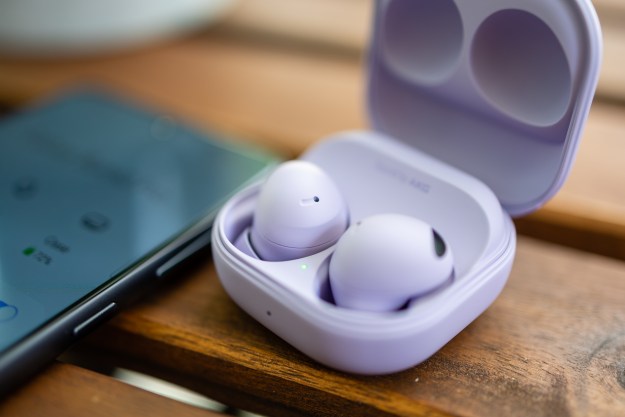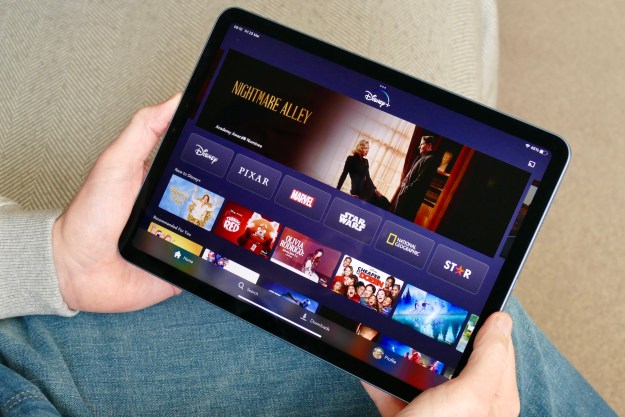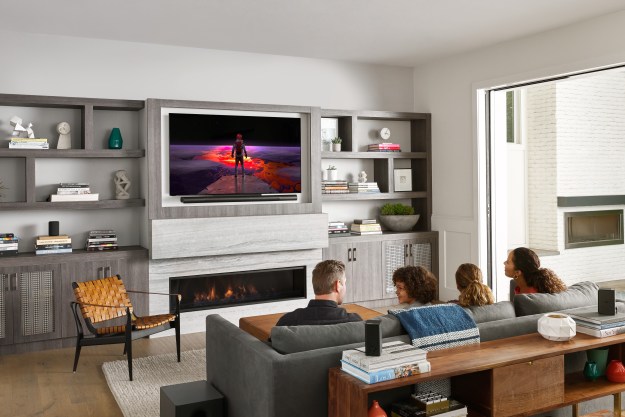Forget Motocross, Blue Angels, and even NASCAR. When it comes to displaying raw, racous power so close you can feel it deep within, the NHRA (that’s the National Hot Rod Association) has them all beat.
We’re talking 11,000 horses locked inside a narrow frame of steel and fiberglass, intake and exhaust pipes splayed out everywhere like some mad-scientist experiment. The name “Funny car” doesn’t quite spell out the absolute thunder-on-wheels rolled into these Nitro-fueled hellcats. The dragsters reach speeds upwards of 300 miles per hour in just 1,000 feet, burning the pavement as they hop across the line in a lightning-fast 3.5 seconds while pulling more Gs than a space shuttle launch.
And then there’s the sound. Good god, the sound. The mind-splitting bolt that comes from hitting the start button is like God’s own raging fury, tearing a fissure through the unsuspecting air around each and every spectator in a bone-shaking, spine-buzzing shockwave. Lined up two or even four cars across at a time, the rocketing machines can barely contain the hellish forces driving them forward, and when those engines roar, they register a full 3 points on the Richter scale.
For those wrapped up in this world of gasoline and asphalt, it’s that sound — along with the furious competition — that makes the NHRA the pinnacle of motorsport. People travel from miles around to witness these freakish creations of muscle-car science catapult across the track, as the screaming engines bore through their bodies like an electrical current. For many race fans, it’s an addiction that’s all but impossible to get anywhere else — and that includes the many televised live NHRA races from across the country.
Like any underexposed sports league, the NHRA is looking to hook more fans from across the nation (and indeed the world), but reproducing the racetrack experience for a TV audience presents a real conundrum. How does the NHRA possibly go about recreating the visceral, elemental action of its sport in a live TV broadcast?
The NHRA believes it has found the answer to that question in two simple words: Dolby Atmos.
Dolby’s object-based surround system is the perfect tool to capture an atmospheric event like an NHRA race in real time, and for its part, the NHRA has been a great partner for Dolby as it looks to venture into new avenues outside the film world. We were able to witness this collaboration in action in Las Vegas at the 6th-ever NHRA race captured in Dolby Atmos, going behind the scenes to see how it’s done.
A different kind of partner
Right now, Dolby Atmos is known almost solely for its cinematic applications. Often referred to as 3D sound, Atmos not only adds overhead (or height) channels to a surround sound mix for better sonic immersion, it also allows sound mixers to arrange individual sound effects independently within that sonic sphere. This creates nearly limitless applications in a multi-speaker movie theater, but Atmos also allows engineers to more accurately reproduce sound components in multiple other forums and venues — including your home.
“You want the impact of that boom as the cars go down the track, but you also want to bring more of the subtlety …”
While films on Blu-ray are an obvious application for Dolby Atmos (and its rival DTS:X) to utilize Atmos-ready home theater systems, in recent years, Atmos has moved beyond the world of cinema and into the frantic arena of live TV. The company has mainly looked at creating more realistic experiences in sporting events like soccer matches and the Olympics.
With the NHRA, Dolby knew it was entering uncharted territory which presented new challenges, but also new opportunities.
While most sporting events captured in Dolby Atmos have multiple similarities, Dolby’s Senior Production Marketing Manager Rob France says the “NHRA was always going to be very different.”
“Dolby Atmos was always designed to work with lots of different types of content,” says France. “But when you come to something like an NHRA race and you hear the cars, you just see that come to life when you mix in

Of course, while the air-ripping boom of a drag race’s “launch” is important to spectators, there’s more to recreating the race atmosphere in your home than just ear-crushing engines. Frankly, for those of us who have neighbors (and human ears), there has to be.
“Atmos allows you to be more creatively flexible,” France continued, “… because yeah, these are very loud cars, but the race lasts four seconds, so you want the impact of that boom as the cars go down the track, but you also want to bring more of the subtlety …”
Atmos live
To help recreate the live race experience, Dolby works closely with the NHRA’s top production pros, including NHRA Technology Executive Mike Rokosa, who’s been working with surround sound broadcasting formats since the ‘80s.
“What happens at that start line is so intense, the SPLs (Sound Pressure Level) are out of this world, they go through you, you feel it in your bones …” Rokosa said.
“If we could bring that to the home, and we could make the fans say, ‘Wow that’s cool, I gotta go see that, I gotta check that out,’ then we’ve accomplished our mission.”
Assembling a multitude of different production elements, such as the “Jib cam” which sits on an arm above the track to catch the action from overhead, as well as multiple different camera angles and lots of microphones, the NHRA crew and Dolby have worked together to refine the live process and creatively assemble the live elements for a powerful end product.
When it comes to race day, of course, that’s easier said than done. To make Atmos work in a live setting, Dolby and the NHRA rely on a large crew of workers setting up all kinds of equipment, including “SPL-safe” microphones, which are sheltered within specialized cases to let through only a fraction of the sound. Those are matched with regular microphones placed further away throughout the track adding up to about three dozen total which, when combined with the video elements, help to paint a vivid picture of the live event.
Once all those sights and sounds are captured, however, the real fun begins. The next step is stringing it all together in real time for the live Dolby Atmos broadcast.
From B to A
Working on the frontlines of the mix crew is sound engineer Rusty Rourke. For NHRA events, Rourke works at a mixing board inside of one of two live-production trucks, the B Truck, where the sound is first piped in from all those microphones and shaped into a live Dolby Atmos mix.
The way Rourke describes it, it almost sounds like he and the camera crew — especially the Jib-cam operator — have developed a psychic shorthand over the course of working together, able to essentially predict what the other will do to to create a tight and well-choreographed mix of visual and sonic elements.
“What happens at that start line is so intense, you feel it in your bones.”
Rourke uses two 5.1 mixing boards in tandem, allowing him to control the entire 5.1 surround mix, along with the four overhead Dolby Atmos height channels, all from the comfort of his acoustically treated booth. In case you were wondering how loud those Funny Cars are away from the start line, you can actually feel the boom of the engines under the floorboards inside the truck a quarter mile away, arriving on a slight delay behind the live feed inside the booth.
Once Rourke has put his spin on the mix, he sends it forward to the A Truck, the final mixing station which acts as the ultimate command post for the final production, helmed by engineer Josh Daniels. In the hectic A Truck studio, as producers and announcers yap directions above his head, Daniels handles the last touches, marrying all of the sounds together — from the announcers and track reporters to the roar of the engines to replays and crowd noise — to create the final mixes that are sent out for broadcast.
We use “mixes” plural here because, of course, not everyone has a Dolby Atmos setup at home. As such, Daniels creates multiple sound mixes, including a 5.1.4
Atmos at home
In order to give us an audition of the final production away from the crowds and the thundering race track, Dolby taxied us across the road to the far end of the Las Vegas Motor Speedway’s sprawling expanse, where a special 7.1.4 Dolby Atmos home theater setup was waiting.
We have to admit, right from the start we were impressed with the production Dolby and the NHRA put together. While we weren’t able to witness a live broadcast, the race cued up for us showed the promise of this partnership, as the dramatic intro alone surrounded us in swirling images and roaring engines that helped encapsulate the excitement of the track.
In fact, with our shocked ears now safe from the mayhem, we enjoyed the broadcast race even more than the real thing. The way the sound is altered for the different camera angles is fascinating, while the powerful engine sounds ring through with sterling fidelity — a true testament to the production crew’s ingenuity in being able to capture such a powerful sound with both clarity and gravitas. The sound was much more controlled and measured than the live event, but with enough dynamics to put you in the center of the action.
The last mile
The real question, for all parties at hand, is just when we’ll see these broadcasts hitting the airwaves and landing in our living rooms. The answer, as is so often the case, currently hangs on what is known as the “last mile,” the point at which your ISP/cable or satellite provider delivers the broadcast to your living room.
At present, live Dolby Atmos broadcasts simply aren’t supported by most carriers, and these behemoth companies are often slow to adapt to new technologies (see Netflix, 4K, HDR, etc.). Still, the future for both Dolby and the NHRA looks very promising. This burgeoning race fan, for one, is looking forward to the moment that last piece of the puzzle is finally put in place.
In the meantime, Dolby and the NHRA are working together to bring the future of live broadcasts to your living room, one race at a time.





